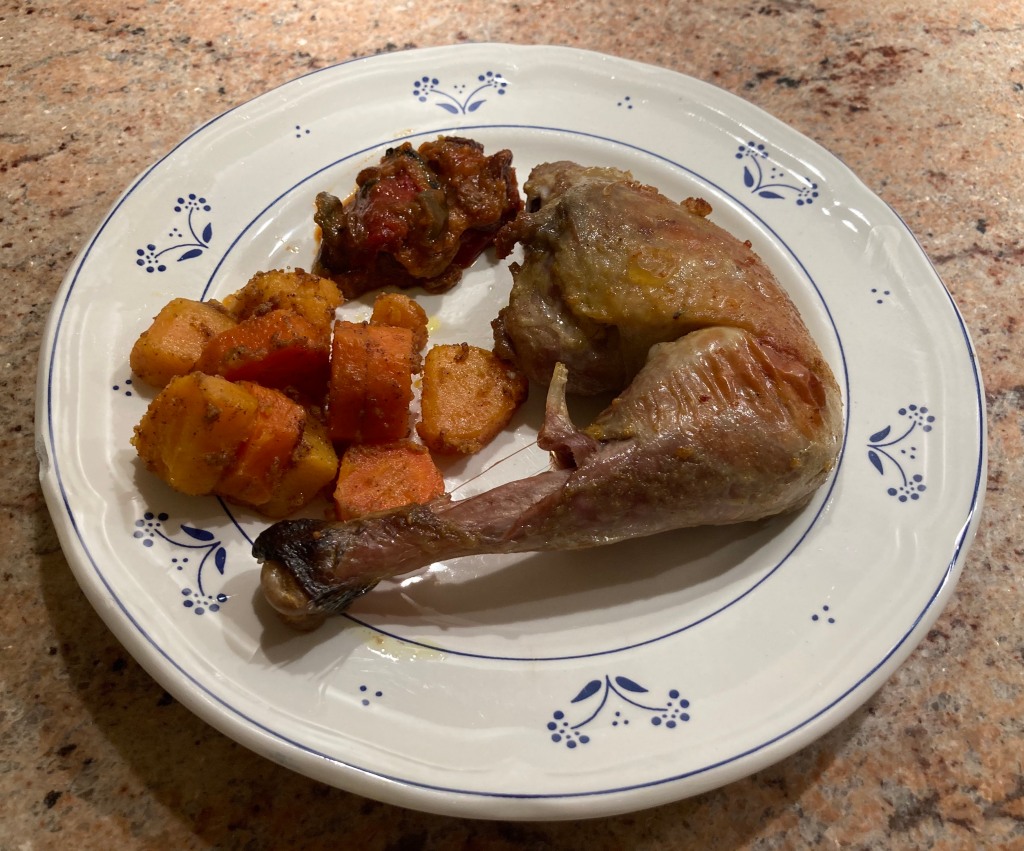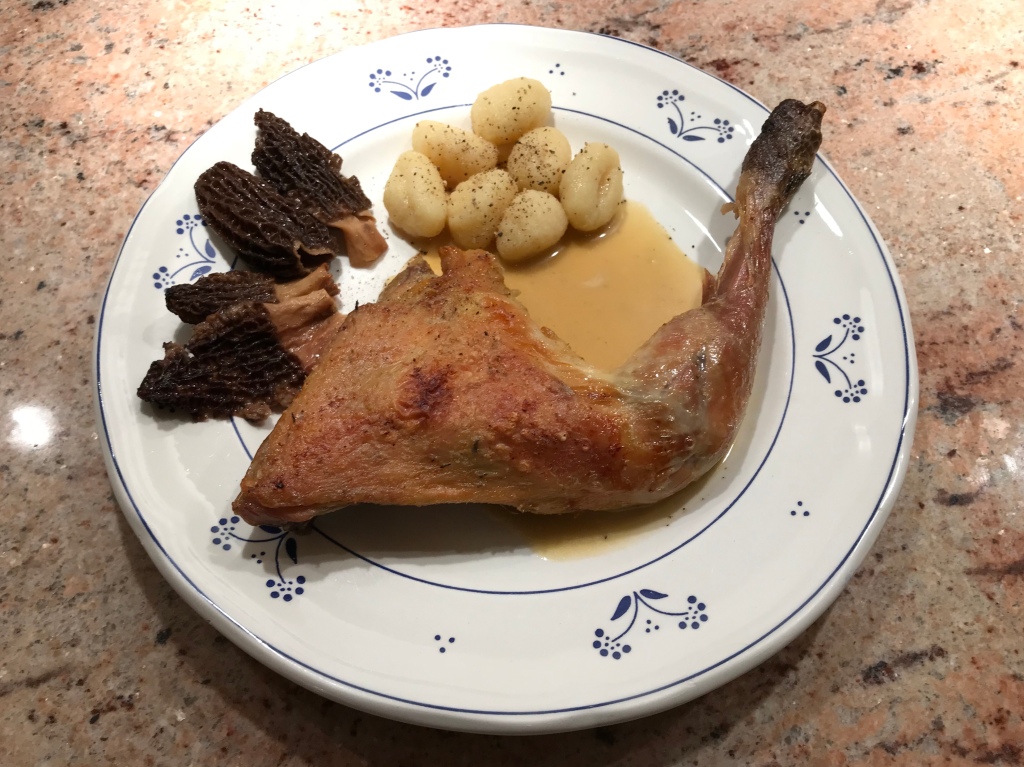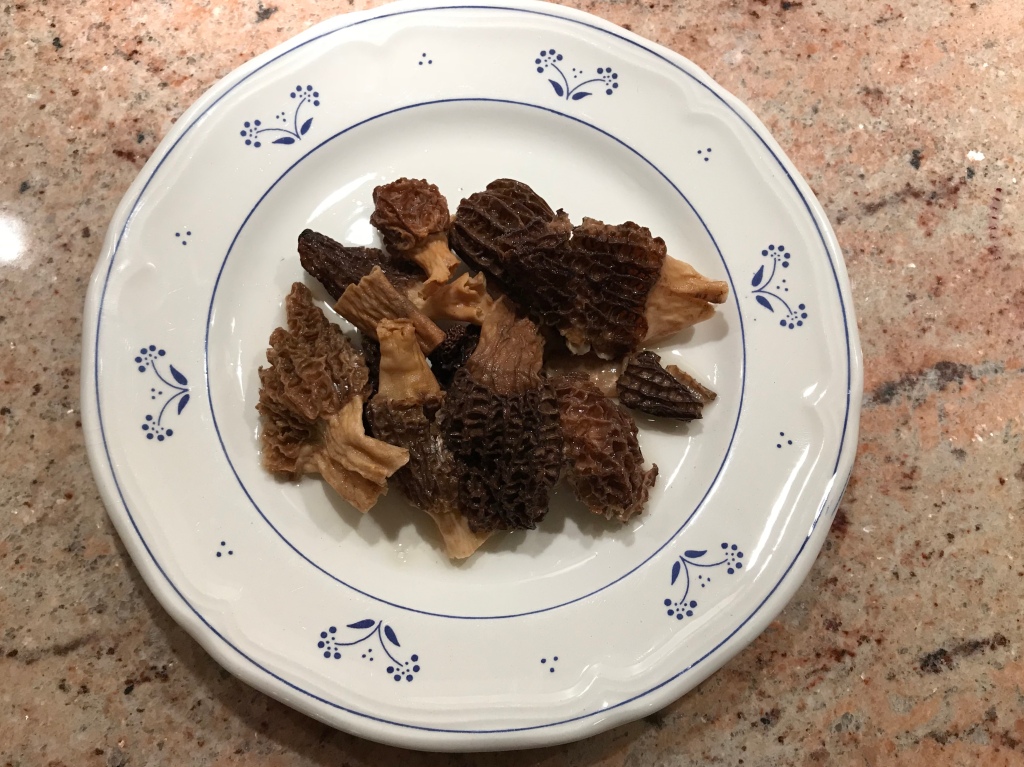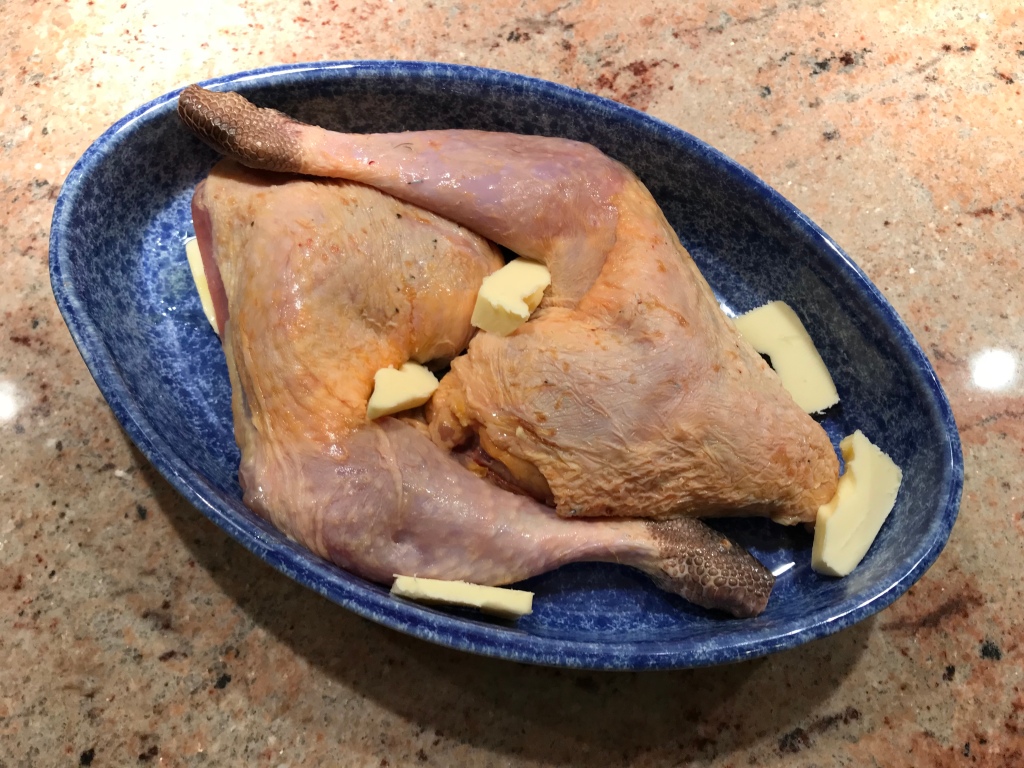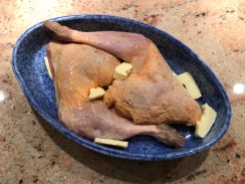Guineafowl with Morels
Finally, it’s spring! The time of year to buy fresh Morels and White Asparagus. One of our local greengrocers charged 34 euro per 100 grams for the Morels and 29 euro per kilo for the White Asparagus. That’s clearly too much for our budget! Let’s wait for a few weeks and hope for more reasonable prices. In the meantime we will enjoy dried morels. In general dried mushrooms are expensive and not very tasty. Fortunately dried morels are the exception to the rule: they are as tasty as fresh ones.
Preparing guineafowl can be a bit of a challenge. Cooking guineafowl requires some liquid (oil, butter, wine, stock) but not too much. Don’t try making Pintade au Vin and don’t spit roast it. Guineafowl is easily overcooked. You must watch the cooking process carefully.
This dish is about a full and rich taste, with the guineafowl at the heart of it supported by morels, cream and potato.
Wine Pairing
We enjoyed our guineafowl with a glass of Bergerac, Château De La Vaure. This is a full bodied red wine with some oak, dark fruit and great flavours overall. Made from Merlot, Cabernet Franc and Cabernet Sauvignon. In general you’re looking for a full bodied red wine with flavours of ripe fruit and oak and with a lasting taste
What You Need
- 2 legs of Guineafowl
- 10 grams of Dried Morels
- Butter
- Olive Oil
- Chicken Stock
- Mustard
- Cream
- Black Pepper
- Gnocchi
What You Do
Pre-heat the oven to 180 ˚C or 355 ˚F. Add the two legs of guinea fowl to a shallow dish with butter and olive oil. Cook for 10 minutes. In the mean time add the morels to hot water. Soak for 15 minutes. Turn the legs upside down after 10 minutes. Cook for another 10 minutes. Turn them a second time, skin up. Add the morels to the dish, leaving the skin free. In parallel start preparing the sauce using chicken stock and some morel water, but not too much. Taste the water before adding. The legs should be ready after 30 minutes. Add the cooking juices to the sauce, grill the legs quickly if the skin is not yet nicely coloured and keep the morels warm. Add mustard and pepper to the sauce, stir well, add some cream and allow to heat through and through for 5 minutes. Taste the sauce and if necessary add more mustard or morel water.
Serve with gnocchi.





